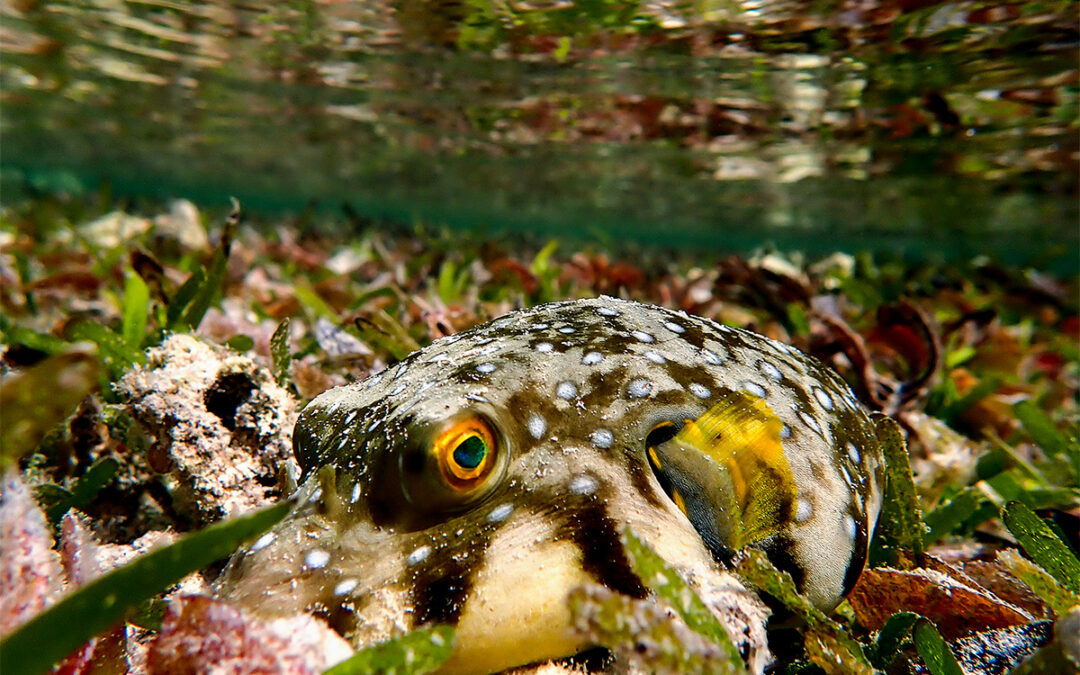In the diving world, we often see people coming diving with all sorts of wonderful cameras. Divers often have spent a considerable amount of time and resources to invest in their underwater gear. As dive professionals, we often get asked, What is the best camera for underwater photography? There is no simple answer to this question. Most cameras are not waterproof and will require an underwater housing, so if you already have one, check to see if there are compatible housings. In this article, we will discuss four types of cameras that you can find, which is suitable for underwater photography.

Squat Lobster pair. Photo taken with an older Canon Powershot Compact Camera.
Action Cameras
Action Cameras, such as the GoPro or the DJI Osmo Action, have gained popularity over the past several years. The photo and video quality of these cameras have improved significantly recently. These are mainly for videoing, but they can take good wide-angle photos, especially if the visibility is good. Macro photos can come out quite blurry, but you can use macro lenses (wet lenses) to get sharply focused photos. Combined with a video light or two, action cameras can be the way to go.

A Whale Shark swimming below. Photo taken with a GoPro Hero 8.
Compact Cameras
Compact cameras are also a more budget-friendly option when it comes to photography. A lot of the more recent cameras take remarkable photos. It is hard to distinguish photos taken by compact cameras from more professional ones. Most camera manufacturers produce a range of compact cameras. The Olympus TG-6 is the GOAT when it comes to underwater photography. Few match the macro capabilities of this camera. Coupled with a wide-angle diopter (wet lens), it also takes excellent wide-angle photos.

Pufferfish in Seagrass. Photo taken with an Olympus TG-6.
Mirrorless Cameras and DSLRs
DSLR cameras were the way to go for those who took photography seriously. It enables photographers to control the output of the images entirely. With underwater photography, these higher-end cameras focus much faster, which is a very useful factor while working with more skittish creatures and allows multiple photos to be taken rapidly. With wide-angle photos, the availability of quality lenses coupled with powerful strobes allows divers to compose images carefully. The downside of DSLRs is that the price with the most basic camera and housing packages cost several 1000s of dollars. But with the emergence of Mirrorless Cameras, it has become less dear than in the past. Mirrorless cameras are often less expensive than their DSLR counterparts with similar specifications and are smaller. Some photography equipment manufacturers have begun to phase out producing DSLR cameras altogether.

A reef at dusk. Photo taken with an Olympus Mirrorless Camera.
Smartphones
Underwater photography with smartphones is not exactly a newcomer to the game, but the quality of phone cameras has significantly improved over the last several years. Several housing manufacturers have been focusing on making underwater casings for smartphones. These produce good results. Some housings have vacuum seals and leak detectors to give the user peace of mind.

Weefine universal housing for Smartphones.
Underwater Photography Accessories
It might feel that this hobby requires quite a bit of money, which is true. It is also tempting to go for newer and upgraded cameras. If you change your camera, often you would require a new housing for it as well. However, photography accessories can be used for years to come, so it is essential to research these as much as you do with your main gear. Handles, Arms, Lighting Gear and Connectors last years when properly cared for. Lenses, including wet lenses, also last for years and can be used with upgraded camera gear.
Skills necessary to be an underwater photographer
It might surprise novice divers, but having an expensive camera or good camera skills (on the surface) does not enable you to take good underwater photos. To quote an article in an old British Society of Underwater Photographers magazine, you should be able to dive without hands. This makes sense, as you would have both hands occupied with the camera gear. You should have good air consumption and be able to move around effortlessly. It goes without saying that good buoyancy is crucial. It is vital to protect the environment you’re photographing in and be able to move near the subject without spooking it or staying in a spot to compose that perfect reefscape photograph. Practice breathing, buoyancy skills, and finning (forward and backward) without disturbing the bottom. Don’t forget to check your air dive computer and maintain buddy contact while diving.

Diver exhibiting perfect buoyancy while taking a photo of a passing by Manta Ray.
Photo and Video Specialty Course
Photography might be a natural skill for some, or you might have to learn it. Nonetheless, taking part in our Photo and Video Specialty Course can be helpful as it allows you to shorten the learning process. Learning the theory behind underwater photography and doing some dives with our instructors allows you to develop your skills. It will certainly show you the way to improve your photography further.
Underwater Photography Hacks
As with most things, the more you practice, the better you get. While going for a dive on a reef each time you want to practice is not feasible, you can practice on land and in swimming pools. Use action figures and other toys to compose photos. Be thorough with the camera settings so you maximise your bottom time. If you’re good at freediving, give free dive photography a go (with a buddy, of course).
In Conclusion
As one of our regular divers at our dive centre said, the best camera is the one you can take almost everywhere. This is quite true because the best moments are the ones that happen spontaneously. Having a camera that can be taken easily on almost all dives takes good photos if you take the time to develop your diving and photography skills. When diving in the Maldives, it is useful to be able to switch back and forth between wide-angle and macro photography, as you can do both here. While looking for gear, check out blogs and guides explaining gears of different brands and usage levels.


Recent Comments